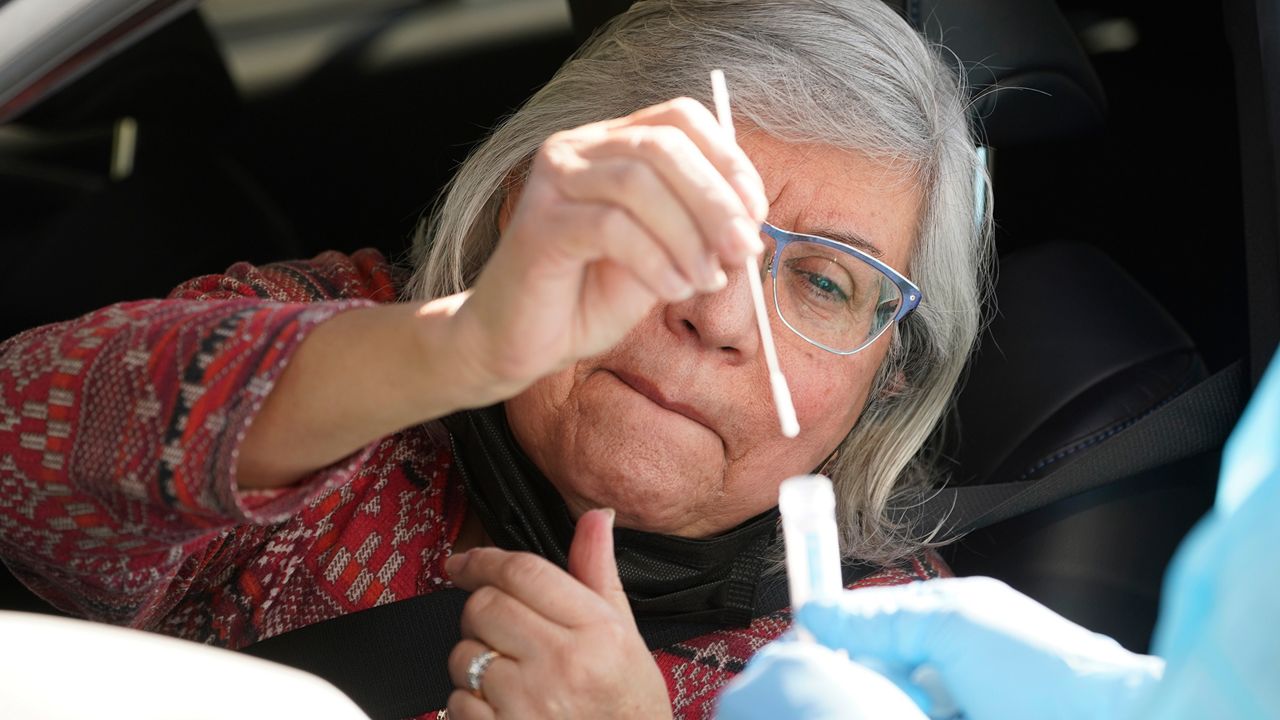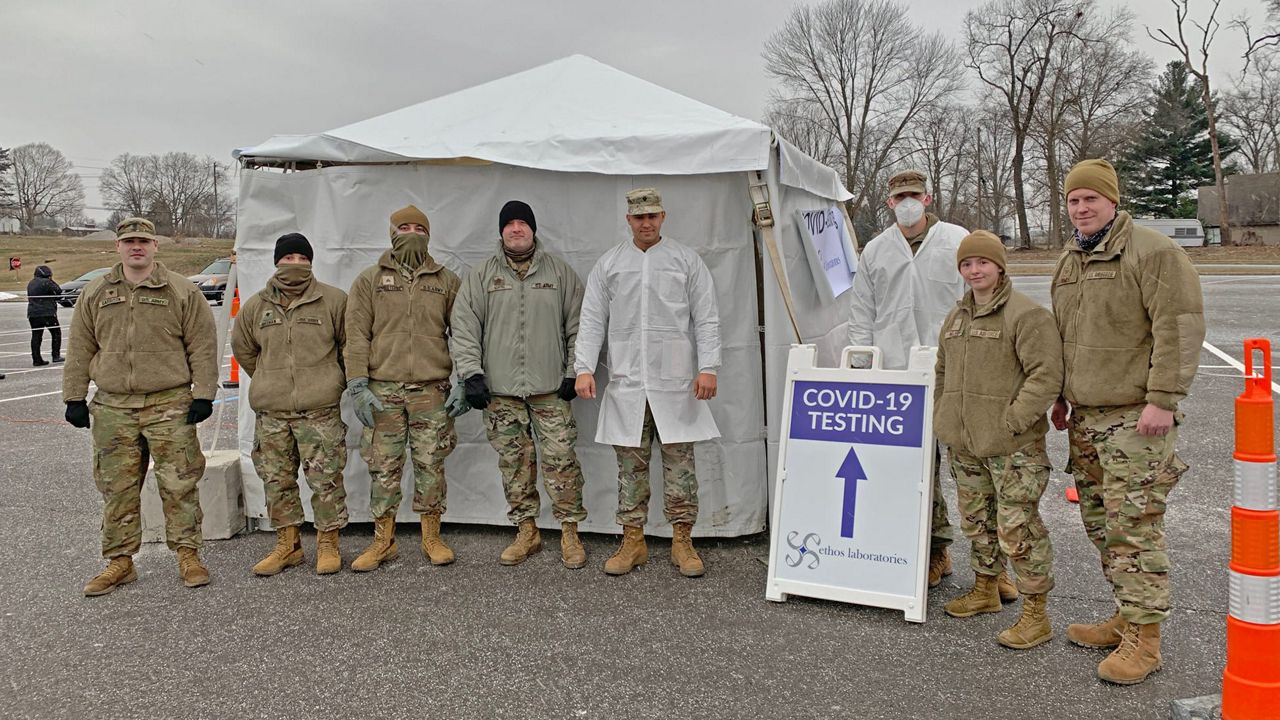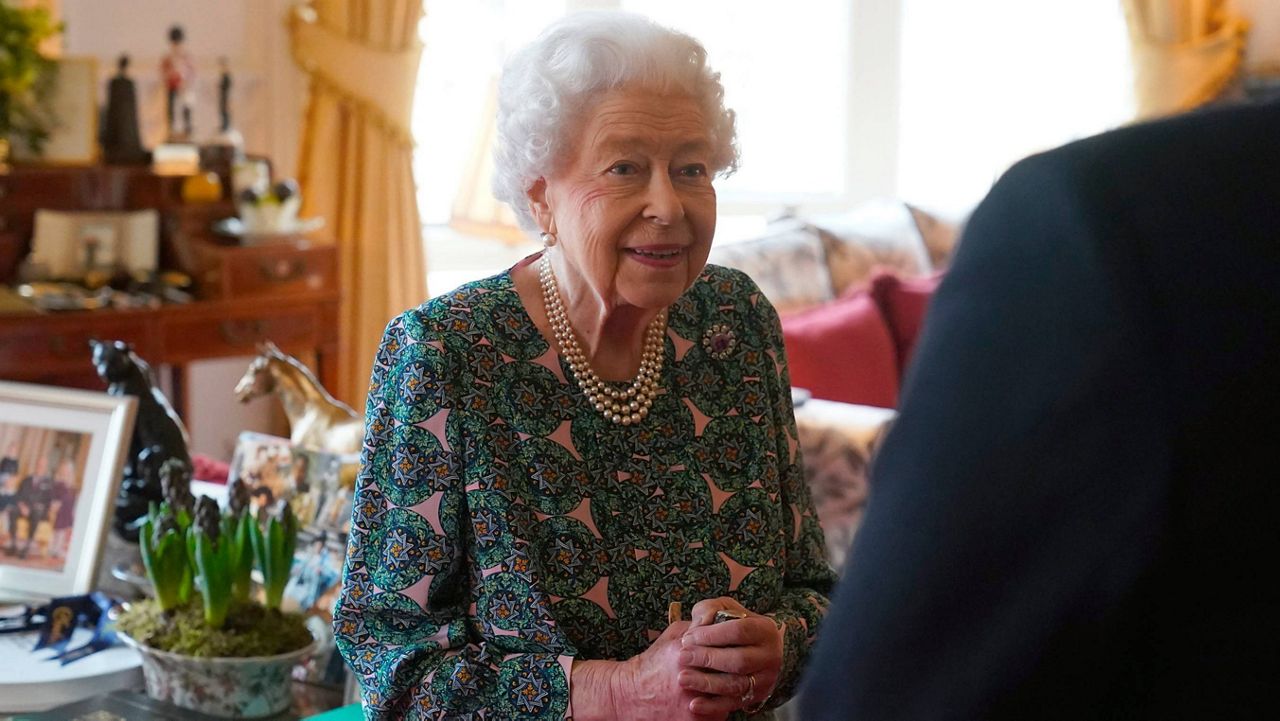COLUMBUS, Ohio — As Ohio counties reach benchmarks for COVID-19 cases that haven’t been met in months, county health officials are asking the state for its plan for the next stage of the pandemic.
What You Need To Know
- County officials in Ohio evaluate masking guidance as cases drop
- Health commissioners ask for clarity from the state on virus targets
- The CDC is expected to release new guidance on masking
Eight Ohio counties have dropped to the Centers for Disease Control and Prevention’s yellow moderate transmission level.
In Tuesday’s update, Summit, Lake, Lorain, Geauga, Ottawa, Sandusky and Wyandot counties joined Holmes County, which was the only county already in the yellow.
Lorain County Health Commissioner Mark Adams said that, at this point in the pandemic, “Everyone wants to know an end date,” whether it’s school superintendents, the business community or residents — especially for a day when health officials can say it’s safe to forgo masks.
In Tuesday’s CDC update, Cuyahoga County remained just above the threshold for moderate transmission, despite having the lowest case rate in the state for the past two weeks as of the Ohio Department of Health’s latest weekly update.
Franklin, Hamilton and Montgomery counties have now joined Cuyahoga County in the orange substantial transmission tier, an encouraging development.
The city of Columbus announced last week that officials are considering ending local mask mandates soon, hoping to see the downward trajectory in virus numbers continue.
Cuyahoga County officials said that reaching the yellow will not necessarily mean that residents can immediately forgo masks.
The health department said getting to that benchmark won’t trigger an end to the county’s mask advisory, which has been in place in its current form since Sept. 15.
“There will be more discussion about this as we continue to review data,” said Cuyahoga County Board of Health communications officer Kevin Brennan.
A COVID-19 case modeling tool that is used in 31 Ohio counties has been projecting for several weeks now that Cuyahoga County will soon reach the yellow transmission level, which the CDC designates as the level where only unvaccinated people are advised to wear a mask in public indoor settings.
“The model has been predicting this,” said Case Western mathematician Daniela Calvetti. “The model seems to be in agreement with this sense that we are approaching a very nice spot for once.”
For nearly the last two years, the Ohio Coronavirus Modeling Collaborative has been publishing short-term forecasts of county-level COVID-19 cases through Case Western’s Center for Community Health Integration, focused on the counties where the Cleveland Clinic and University Hospitals have facilities. The modeling numbers are closely watched by officials at health departments and hospitals, helping guide their response to the pandemic.
Calvetti said the sharp downward trend in Cleveland is largely the result of the immunity generated from a record number of infections during the latest virus surge, including many cases that were unrecorded due to lack of symptoms or lack of testing.
“At least for now, we seem to have almost exhausted the population of people who will get infected,” Calvetti said.
Continued progress in the vaccination effort as well as greater attention from the public to things, like masking, due to the severity of omicron also likely helped drive cases down, Calvetti said. While the trends give reason for optimism, she said what they can’t forecast is if there will be a new variant.
Adams said the latest data shows Lorain is moving toward a low point in its virus numbers.
He said that every other week, health commissioners have been meeting with Gov. Mike DeWine, and the hot question these days is when can Ohio move to a possible endemic stage.
“Omicron has burned itself out like a match, and we don't have a variant of concern waiting like we did with delta,” he said.
Adams said he and some of the other health commissioners hope the state will release details about next steps soon, but he said the DeWine administration has not shared precise case targets for dropping pandemic protocols yet.
“Every time we speak, we are asking for information about the planning piece of, when does this look endemic?” he said. “What is ODH’s plan, what is the state's plan on telling us when this is endemic so that way we can give that to our community, because we want to know — if our numbers are so low, how low does it have to go for this to be considered endemic?”
On Tuesday, the Ohio National Guard’s two month COVID-19 support mission came to an end as service members worked their final shifts at the remaining hospitals where they were deployed. During the omicron surge, nearly 2,400 National Guard and State Defense Force members were deployed to hospitals and testing sites throughout the state.
In Ohio, 1,450 patients were hospitalized with COVID-19 Tuesday, and seven-day average cases stood at 1,611.3. Both figures are at the lowest level since August.
“The data really shows that we should be at our lowest point by March 1. That's where the data is going,” Adams said.
Schools are wondering when they can stop recommending or requiring masks, and when they can stop logging and reporting every case, he said.
“They're looking for something in writing from the governor or from CDC,” he said.
The CDC’s current masking guidance was released back in July before recent variant surges. CDC officials said last week that the agency is working on new guidance that will be “relevant” and tied to the level of hospitalizations and community transmission.








